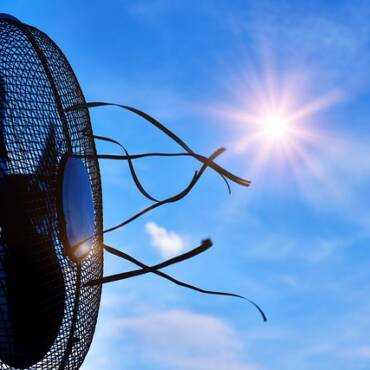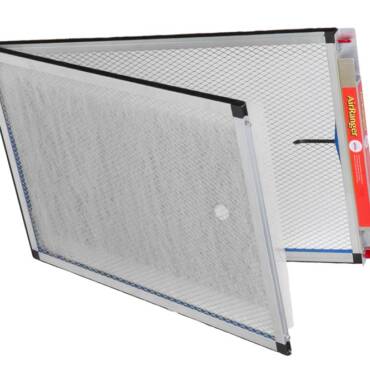In the quest for healthier living environments, the quality of indoor air plays a pivotal role. With people spending a significant portion of their time indoors, the need for clean and pure air has never been more crucial. Modern air conditioning systems, equipped with advanced air purification technologies, are at the forefront of this revolution. These systems not only provide cooling but also enhance indoor air quality by reducing allergens, pollutants, and pathogens. This article explores the health benefits of air conditioners with built-in air purifiers, their role in allergen reduction, and the integration of UV light technology to eliminate bacteria and viruses.
Air Conditioners with Built-in Air Purifiers
Traditional air conditioners primarily focus on cooling the air, but advancements in technology have led to the development of units that also purify the air. Air conditioners with built-in air purifiers use a combination of filters and purification technologies to remove contaminants from the air, providing a dual function that significantly improves indoor air quality.
- HEPA Filters: High-Efficiency Particulate Air (HEPA) filters are designed to capture 99.97% of airborne particles as small as 0.3 microns. This includes dust, pollen, mold spores, and other allergens. When integrated into air conditioners, HEPA filters ensure that the circulated air is free from most common pollutants, creating a cleaner and healthier indoor environment.
- Activated Carbon Filters: These filters are effective at removing odors, smoke, and volatile organic compounds (VOCs) from the air. Activated carbon filters work by adsorbing contaminants onto their surface, thereby purifying the air that passes through the air conditioning system.
- Ionizers: Some modern air conditioners use ionization technology, which releases negative ions into the air. These ions attach to positively charged particles such as dust and allergens, causing them to clump together and fall out of the air. This process helps in reducing airborne contaminants and improving overall air quality.
The Role of Air Conditioning in Reducing Allergens
Allergens like pollen, pet dander, dust mites, and mold spores are common triggers for respiratory issues and allergies. Air conditioning systems with air purification capabilities play a crucial role in mitigating these allergens, thereby promoting better health.
- Dust and Pollen Reduction: By continuously circulating and filtering indoor air, air conditioners with advanced filtration systems can effectively reduce the concentration of dust and pollen. This is particularly beneficial for individuals with asthma or allergies, as it helps to minimize exposure to these common triggers.
- Mold and Mildew Prevention: Moisture control is another essential function of air conditioners. By maintaining optimal humidity levels, air conditioners prevent the growth of mold and mildew, which thrive in damp environments. This not only protects the structural integrity of buildings but also reduces the risk of mold-related health issues.
- Pet Dander Control: Pet dander is a common allergen that can exacerbate respiratory conditions. Air conditioners with HEPA filters can capture and remove pet dander from the air, creating a more comfortable living space for pet owners and allergy sufferers alike.
UV Light Technology: A Powerful Tool for Healthier Air
One of the most significant advancements in air purification within air conditioning systems is the integration of UV (ultraviolet) light technology. UV light has been used for decades in medical settings to sterilize equipment and surfaces, and its application in air conditioning systems offers powerful benefits.
- Eliminating Bacteria and Viruses: UV-C light, a specific wavelength of ultraviolet light, has germicidal properties that can kill bacteria, viruses, and other microorganisms. When incorporated into air conditioners, UV-C lamps are positioned to irradiate the air as it passes through the system. This exposure effectively neutralizes harmful pathogens, preventing them from circulating indoors and reducing the risk of airborne diseases.
- Preventing Biological Growth: UV light not only kills pathogens but also inhibits the growth of mold, mildew, and other biological contaminants on the coils and other internal components of the air conditioning system. This ensures that the system remains clean and operates efficiently, further contributing to improved indoor air quality.
- Enhanced Air Quality: By combining UV light technology with advanced filtration, modern air conditioners provide a comprehensive solution for air purification. This dual approach ensures that the air is not only cooled but also free from harmful microorganisms and allergens, creating a healthier living environment.
Health Benefits of Improved Indoor Air Quality
The health benefits of improved indoor air quality are extensive. Clean air reduces the incidence of respiratory illnesses, allergies, and infections. It also contributes to overall well-being, enhancing sleep quality, cognitive function, and productivity. Here are some specific health benefits associated with advanced air purification technologies in air conditioners:
- Respiratory Health: By removing pollutants and allergens, air conditioners with air purification capabilities help alleviate symptoms of asthma, allergies, and other respiratory conditions. This can lead to fewer doctor visits and reduced reliance on medications.
- Immune System Support: Cleaner air reduces the burden on the immune system, allowing it to function more effectively. This can result in a lower incidence of infections and improved overall health.
- Enhanced Comfort: Improved air quality leads to a more comfortable indoor environment. Reduced odors, stable humidity levels, and the absence of allergens contribute to a more pleasant living or working space.
Conclusion
The integration of air purification technologies into modern air conditioning systems marks a significant advancement in creating healthier indoor environments. With features like HEPA and activated carbon filters, ionizers, and UV light technology, these systems offer comprehensive solutions for improving air quality. By reducing allergens, preventing mold growth, and eliminating harmful pathogens, air conditioners with built-in air purifiers play a crucial role in promoting health and well-being. As technology continues to evolve, the importance of clean indoor air will only grow, making advanced air conditioning systems an essential investment for a healthier future. The team at Dacs are well versed in the modern technology of all the air conditioning units available and are heavily invested in the importance of clean indoor air. Have a chat with the team and see what a difference it can make to your indoor environment.
Whether you require installation, repair, or maintenance, our technicians will assist you with top-quality service at any time of the day or night. Take comfort in knowing your indoor air quality is the best it can be with MOE heating & cooling services Ontario's solution for heating, air conditioning, and ventilation that’s cooler than the rest.
Contact us to schedule a visit. Our qualified team of technicians, are always ready to help you and guide you for heating and cooling issues. Weather you want to replace an old furnace or install a brand new air conditioner, we are here to help you. Our main office is at Kitchener but we can service most of Ontario's cities
Source link




Add Comment